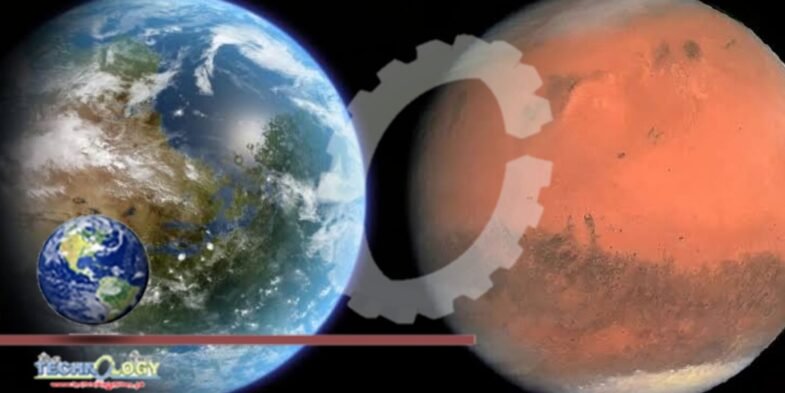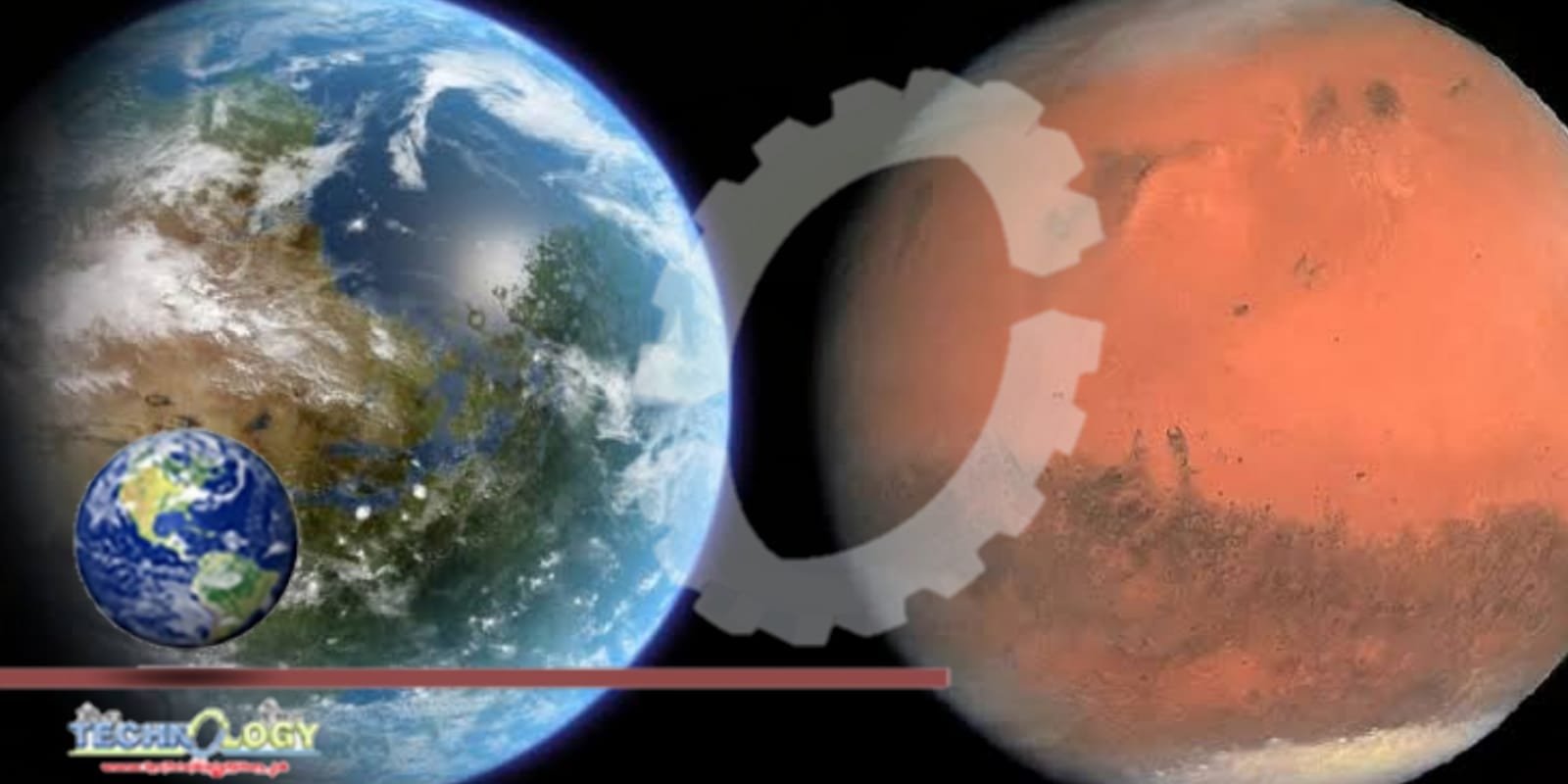Arizona’s Grand Canyon is one of the most famous geological features on Earth. Water once rushed through it, creating the massive deep canyon system we see today. Now, a satellite has found evidence for water in Mars’ own version of the Grand Canyon, scientists announced on December 12, 2021. The joint European-Russian Trace Gas Orbiter (TGO), part of the ExoMars mission, found this subsurface water in Valles Marineris. The scientists said the water is most likely in the form of ice.

The researchers published the new peer-reviewed results in the journal Icarus on November 19, 2021. The March 1, 2022, volume of Icarus will also include the paper. EarthSky 2022 lunar calendars now available! They make great gifts. Order now. Going fast!
The discovery surprised scientists
TGO found the water using its FREND (Fine Resolution Epithermal Neutron Detector) instrument. The spacecraft uses FREND to map the amount of hydrogen (a primary component of water) in the immediate subsurface of the planet. The water discovery was surprising, since it shows there is a lot more water in the subsurface below the bottom of the canyon than had been expected.
The water-rich area, in the central part of the canyon in Candor Chaos, is about the size of the Netherlands. As it turns out, the near-surface material in this region contains about 40% water. Igor Mitrofanov of the Space Research Institute of the Russian Academy of Sciences in Moscow and lead author of the new study, said:
With TGO we can look down to one meter below this dusty layer and see what’s really going on below Mars’ surface, and, crucially, locate water-rich ‘oases’ that couldn’t be detected with previous instruments. FREND revealed an area with an unusually large amount of hydrogen in the colossal Valles Marineris canyon system: assuming the hydrogen we see is bound into water molecules, as much as 40% of the near-surface material in this region appears to be water.
Map of cratered landscape with blue, red, yellow and purple regions, areas labeled A, B and C.
View larger. | This map shows the area of hydrogen (water) in the central region of Valles Marineris. ‘C’ indicates the water-rich region. Image via I. Mitrofanov et al. (2021)/ ESA.
Mapping hydrogen with neutrons
So how did TGO discover the water? It used its FREND instrument to map out the hydrogen content in the Martian soil just below the surface. It does this by detecting neutrons rather than using light. Co-author Alexey Malakhov said:
Neutrons are produced when highly energetic particles known as ‘galactic cosmic rays’ strike Mars; drier soils emit more neutrons than wetter ones, and so we can deduce how much water is in a soil by looking at the neutrons it emits. FREND’s unique observing technique brings far higher spatial resolution than previous measurements of this type, enabling us to now see water features that weren’t spotted before. We found a central part of Valles Marineris to be packed full of water, far more water than we expected. This is very much like Earth’s permafrost regions, where water ice permanently persists under dry soil because of the constant low temperatures.
But what kind of water in Mars’ Grand Canyon?
Another question is what form the water is in. Is it liquid, ice or chemically bound in the soil? Right now, the researchers think it is most likely ice, according to Malakhov:
Overall, we think this water more likely exists in the form of ice.
Men in dark suits talking across a conference table with white-haired man in lighter suit.
Igor Mitrofanov (right) meets with ESA executives on August 25, 2015, at the MAKS international aviation and space show. Mitrofanov is the lead author of the new study about water in Valles Marineris. Image via ESA/ Stephane Corvaja (2015).
However, there must be some unique conditions that allow the water ice to remain there. This is because water ice or even bound water usually evaporates this close to the equator, where the canyon system is. Only the right combination of temperature, pressure and hydration can keep the water from just disappearing. It’s also possible that something is replenishing the water, although how that would occur isn’t known.
Final confirmation that the water really is ice will require additional observations, however. As co-author Håkan Svedhem said:
This finding is an amazing first step, but we need more observations to know for sure what form of water we’re dealing with. Regardless of the outcome, the finding demonstrates the unrivalled abilities of TGO’s instruments in enabling us to ‘see’ below Mars’ surface, and reveals a large, not-too-deep, easily exploitable reservoir of water in this region of Mars.
Clues to Mars habitability and life
Of course, the discovery of water also brings up the possibility of life, past or present. This water may be left over from when Mars had abundant water on its surface a few billion years ago.
This result really demonstrates the success of the joint ESA-Roscosmos ExoMars program. Knowing more about how and where water exists on present-day Mars is essential to understand what happened to Mars’ once-abundant water, and helps our search for habitable environments, possible signs of past life, and organic materials from Mars’ earliest days.
Could this water even possibly support microorganisms today? Nobody knows for sure, but it is a tantalizing thought. It would be better if the water were liquid and not frozen, but even then, it is conceivable that some kinds of extremophile-type organisms could still use it.
Resource for future human exploration
When human astronauts eventually arrive on Mars, water will of course be a primary necessary resource. Being so close to the surface means that this water could be used to help sustain human expeditions. The frozen water in the soil, like permafrost on Earth, could easily be turned into liquid water.
This would be easier than trying to use ice found at the planet’s poles or deeper underground. There may also be liquid water below Mars’ surface but it is likely even deeper down and more difficult to access.
Spacecraft with solar panel and large dish antenna above reddish planet.
Artist’s illustration of the joint European-Russian Trace Gas Orbiter (TGO), which has been orbiting Mars since 2016. Image via ATG medialab/ ESA.
Largest canyon in the solar system
Valles Marineris is a massive feature in the Martian landscape, dwarfing the Grand Canyon on Earth. In fact, it is about ten times longer and five times deeper than the Grand Canyon. It stretches about 2,500 miles (4,000 km) in length and reaches depths of up to 4 miles (7 km). Imagine standing at the edge and looking across that giant chasm …
The existence of water in Valles Marineris will also help scientists better understand what happened to all of the water that used to exist on the surface of Mars. Where did it all go? Is most of it underground now? Wilson said:
Knowing more about how and where water exists on present-day Mars is essential to understanding what happened to Mars’ once-abundant water, and helps our search for habitable environments, possible signs of past life, and organic materials from Mars’ earliest days.
Bottom line: The European-Russian Trace Gas Orbiter has discovered subsurface water ice in Valles Marineris on Mars, the largest canyon system in the solar system.
Arizona’s Grand
Source: earthsky
